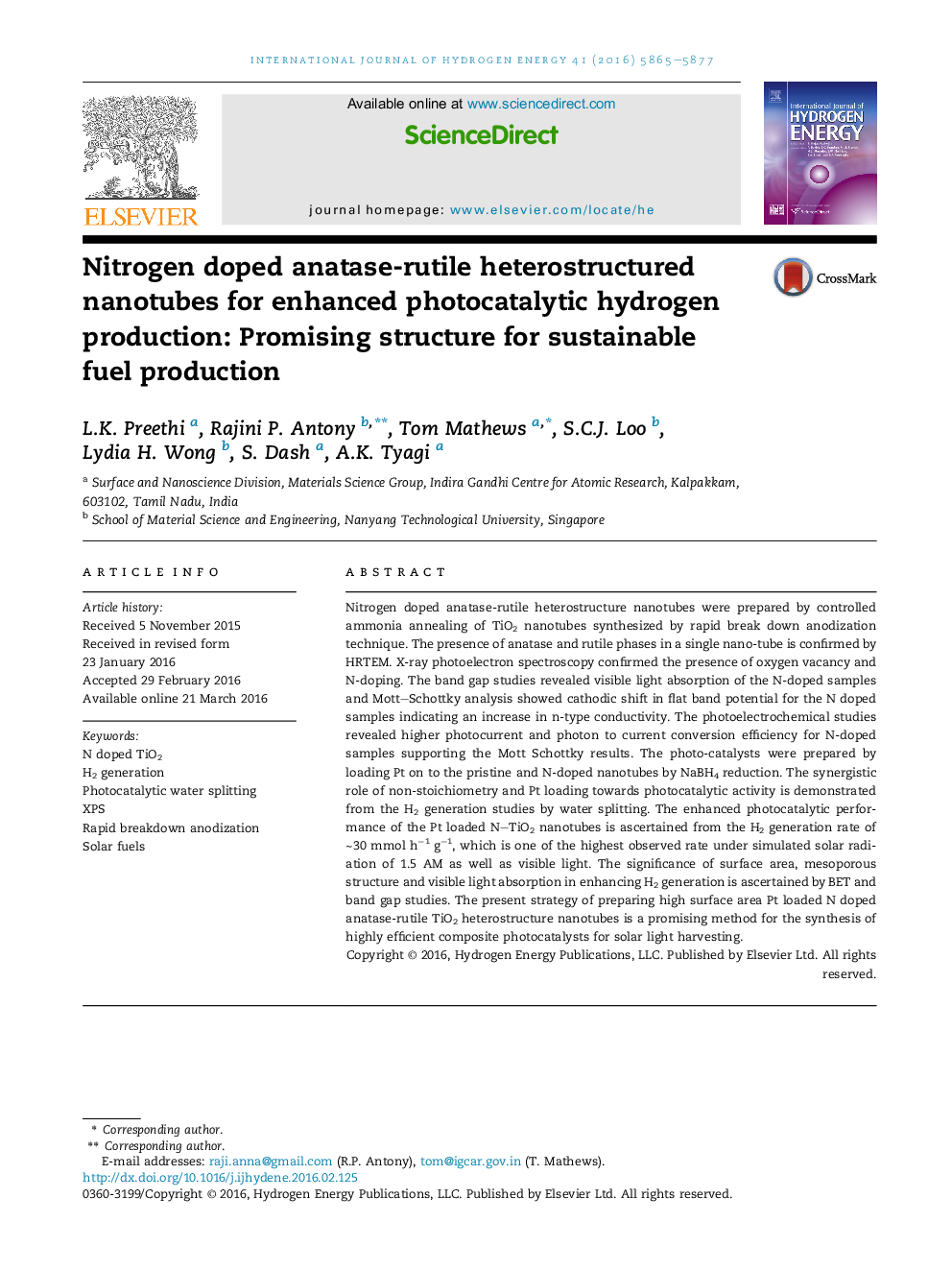| Article ID | Journal | Published Year | Pages | File Type |
|---|---|---|---|---|
| 1273590 | International Journal of Hydrogen Energy | 2016 | 13 Pages |
•Visible light active Pt/N- anatase/rutile nanotubular catalysts were synthesized.•HRTEM, XRD and XPS revealed anatase/rutile heterostructured N-doped TiO2 nanotubes.•H2 generation of ∼30 mmol h−1g−1 (highest reported value) was obtained under 1.5 AM.•BET/DRS ascertained the role of surface area and N-doping in enhancing H2 production.
Nitrogen doped anatase-rutile heterostructure nanotubes were prepared by controlled ammonia annealing of TiO2 nanotubes synthesized by rapid break down anodization technique. The presence of anatase and rutile phases in a single nano-tube is confirmed by HRTEM. X-ray photoelectron spectroscopy confirmed the presence of oxygen vacancy and N-doping. The band gap studies revealed visible light absorption of the N-doped samples and Mott–Schottky analysis showed cathodic shift in flat band potential for the N doped samples indicating an increase in n-type conductivity. The photoelectrochemical studies revealed higher photocurrent and photon to current conversion efficiency for N-doped samples supporting the Mott Schottky results. The photo-catalysts were prepared by loading Pt on to the pristine and N-doped nanotubes by NaBH4 reduction. The synergistic role of non-stoichiometry and Pt loading towards photocatalytic activity is demonstrated from the H2 generation studies by water splitting. The enhanced photocatalytic performance of the Pt loaded N–TiO2 nanotubes is ascertained from the H2 generation rate of ∼30 mmol h−1 g−1, which is one of the highest observed rate under simulated solar radiation of 1.5 AM as well as visible light. The significance of surface area, mesoporous structure and visible light absorption in enhancing H2 generation is ascertained by BET and band gap studies. The present strategy of preparing high surface area Pt loaded N doped anatase-rutile TiO2 heterostructure nanotubes is a promising method for the synthesis of highly efficient composite photocatalysts for solar light harvesting.
Graphical abstractFigure optionsDownload full-size imageDownload as PowerPoint slide
